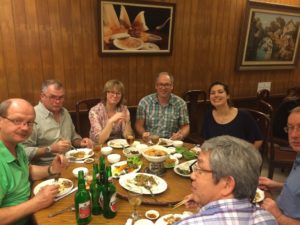This is an archive of a trip by staff biologist Telena Welsh, who visited Java, Indonesia to work with other conservation experts to learn how we can prevent the extinction of the lowland anoa.
Telena’s’s trip was made possible through The Zoo Society’s Dr. Holly Reed Wildlife Conservation Fund. Point Defiance Zoo & Aquarium is home to lowland anoa Baby Bean, born in 2002.
Sunday Jan. 24, 2016
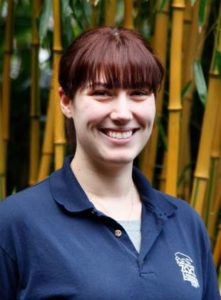 My name is Telena Welsh. I’m the senior staff biologist in the Asian Forest Sanctuary and my destination for this trip is Java, Indonesia.
My name is Telena Welsh. I’m the senior staff biologist in the Asian Forest Sanctuary and my destination for this trip is Java, Indonesia.
With a population of over 141 million people, Java is the most populated island on earth and is just over 2/3 the size of Washington State (49,536 sq mi). It is located between Sumatra and Bali and almost entirely of volcanic origin.
Why am I traveling so far from home? I am the SSP (Species Survival Plan) Coordinator and Studbook keeper for the Lowland anoa and am in Java to act as the AZA (Association of Zoos and Aquariums) representative for the Lowland anoa GSMP (Global Species Management Program).
That’s a lot of acronyms and terminology! Let’s see if I can break it down a little. I manage the North American breeding program for anoa, an endangered species of water buffalo found only on the island of Sulawesi (not far from Java). The mission of this program is to keep the population stable (both genetically and demographically) in zoos and to promote conservation in the wild.
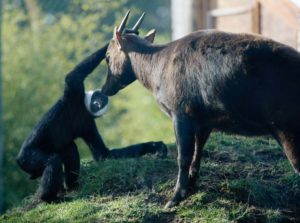 Most endangered zoo populations are managed regionally, meaning that geographic areas around the world look only at their own region when making breeding plans. However, there is a goal to manage more populations globally and collaboratively. This means communicating with each other and looking at the population on a global scale. Currently, there are only 6 GSMPs in the world (learn more).
Most endangered zoo populations are managed regionally, meaning that geographic areas around the world look only at their own region when making breeding plans. However, there is a goal to manage more populations globally and collaboratively. This means communicating with each other and looking at the population on a global scale. Currently, there are only 6 GSMPs in the world (learn more).
I’m meeting with other animal experts from around the world in Java to set up a similar program for the Lowland Anoa, Banteng and Babirusa.
The Zoo Society’s Dr. Holly Reed Wildlife Conservation Fund has provided the financial support for this experience, continuing a legacy of conservation and action that I am proud to be a part of.
As I look ahead to a long trip, followed by days of meetings and new experiences, I am truly grateful to Point Defiance Zoo & Aquarium and the Asian Forest Sanctuary team for providing me with this opportunity.
I am excited to take you along with me for this journey and will be sure to keep everyone updated on my adventures in Java!
Monday Jan. 25, 2016
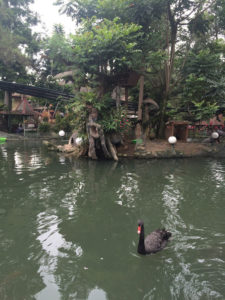 My first thought as I exited the plane in Jakarta? It feels like Florida, in the summer. The weather was hot, humid and stifling. The conference hotel is located only 60 miles from the airport; however, due to traffic, the trip routinely takes at least 3 hours. Stop and go traffic turned into winding, hilly roads as we left Jakarta and the scenery became more lush. After what felt like ages, I arrived at the hotel and dragged myself to the room, my excitement still there but slightly dampened by no sleep.
My first thought as I exited the plane in Jakarta? It feels like Florida, in the summer. The weather was hot, humid and stifling. The conference hotel is located only 60 miles from the airport; however, due to traffic, the trip routinely takes at least 3 hours. Stop and go traffic turned into winding, hilly roads as we left Jakarta and the scenery became more lush. After what felt like ages, I arrived at the hotel and dragged myself to the room, my excitement still there but slightly dampened by no sleep.
A few hours later I found myself in a large conference room. The meeting was to cover GSMPs for not only Anoa, but banteng and babirusa as well. The first two days were scheduled for banteng, the next two for Anoa and the last for babirusa. I was one of seven people who had come from out of the country for the proceedings and together we represented six different countries; seven when you included Indonesia. Just as we sat down to wait for the Welcome speech, there was a change of plans. Our little group was quickly whisked into a private room to meet the director of the Ministry of Forestry for Indonesia, who was seeking advice on some current conservation issues.
The rest of the day was a whirlwind of conversation (much of which was in Indonesian), collaboration, brainstorming and planning between the facilitators from zoos and the Indonesian people. At the end of it I realized that, yes, I am crazy. Crazy to always jump in with both feet and let my passion lead me. Crazy to apply for and accept the Anoa SSP position. And crazy to come all the way to Java by myself without being in charge of any of the details (did I mention I don’t like flying and I’m a bit of a control freak?). So, yes, I am crazy but I am also making a difference. Just like everyone else in that meeting today. Just like my colleagues at Point Defiance Zoo & Aquarium who continuously strive to enhance animal care and conservation. And just like you. We are all a little crazy, but we can all have an impact.
“Here’s to the crazy ones. The misfits. The rebels. The troublemakers. The round pegs in the square holes. The ones who see things differently. They’re not fond of rules. And they have no respect for the status quo. You can quote them, disagree with them, glorify or vilify them. About the only thing you can’t do is ignore them. Because they change things. They push the human race forward. And while some may see them as the crazy ones, we see genius. Because the people who are crazy enough to think they can change the world, are the ones who do.” – Rob Siltanen.
Tuesday Jan. 26, 2016
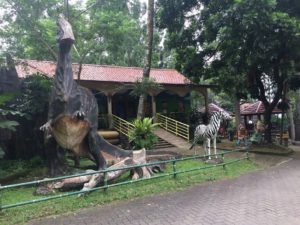 Zoo Day and a long night’s work!
Zoo Day and a long night’s work!
The Bogor region, where we are staying, is cooler than Jakarta, but it is still humid and warm. That, coupled with long days in a conference room, and lots of brain work, are enough to drain one’s energy. In addition to that, the workshop days are long… very long. The GSMP organizing team works from 8am to midnight, every night.
That being said, there is still some time for a little fun! My Anoa meetings start tomorrow, so I have taken the opportunity to visit the zoo today. The meetings themselves are being hosted by a large zoological facility called the Taman Safari in Indonesia. Today I travelled the 15 minutes and explored the zoo with the international studbook keeper for anoa.
The zoo is surrounded by beautiful scenery and I got to hear gibbons in the wild just outside the park! It was a wonderful break to the conference room, which is good because the anoa meetings start tomorrow and I have a feeling it will only get busier from here on out.
Vocabulary Words:
Studbook: A current and historic record of all animals of a particular species. This book is essentially a large family tree that helps biologists look at the genetics of a population.
Thursday Jan. 28, 2016
The day has finally arrived! I found my way into the conference room for two anoa-filled days. I will try to give you a quick and simple overview of what our day covered.
We started off with a report on the in situ (fancy term for “in the wild”) status of anoa. For those of you who don’t know, anoas are found only on the island of Sulawesi and the nearby island of Buton (see map). They live in various fragmented populations in undisturbed rainforest and are essentially small water buffalo.
Anoa have been listed as endangered since the 1960s and, like most wild animals today, are struggling with habitat destruction. That being said, the biggest threat to anoa is currently hunting/poaching. High hunting rates can quickly decimate a species like anoa because they can only have one offspring every few years. They aren’t able to replenish their population quickly enough to keep the population from dropping.
After getting an update on the ex situ (in zoo) population, we set out to create a list of actions to help our zoo population in Europe, North America and Indonesia, to be stable and genetically healthy. The health of the zoo population hinges on the addition of potential founders to our breeding population. A potential founder is an animal from the wild whose genetics are not already represented in the zoo population.
Two days, snacks and a lot of coffee/tea later, we came up with a (very long and technical) plan to add more potential founders and keep the ex situ population stable. And although my To Do List got significantly longer, I am incredibly happy that we have taken these steps to make the ex situ and in situ populations healthy and continue for many years.
Vocabulary Words:
In Situ: In the wild
Ex Situ: In zoos, rescues, sanctuaries, etc.
Potential Founder: An animal from the wild whose genetics are not already represented in the zoo population.
Founder: An animal from the wild whose genetics are not already represented in the zoo population who has been successful breeding in zoos.
Saturday Jan. 30, 2016
After six days of meetings and nights of homework, we are finished! We are walking away from this meeting with a solid action plan for Banteng, babirusa and anoa with the aim of keeping the in situ and ex situ populations healthy.
